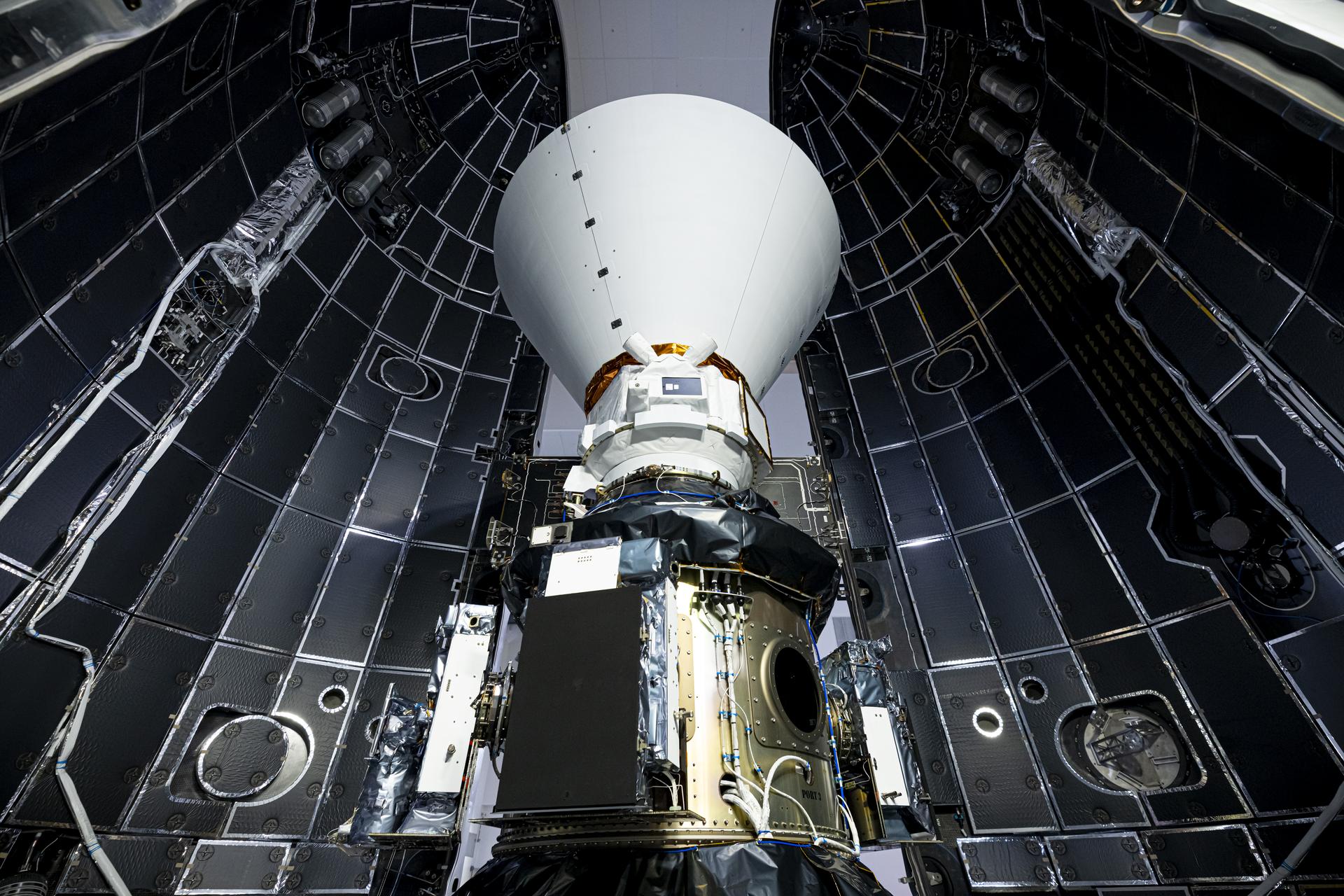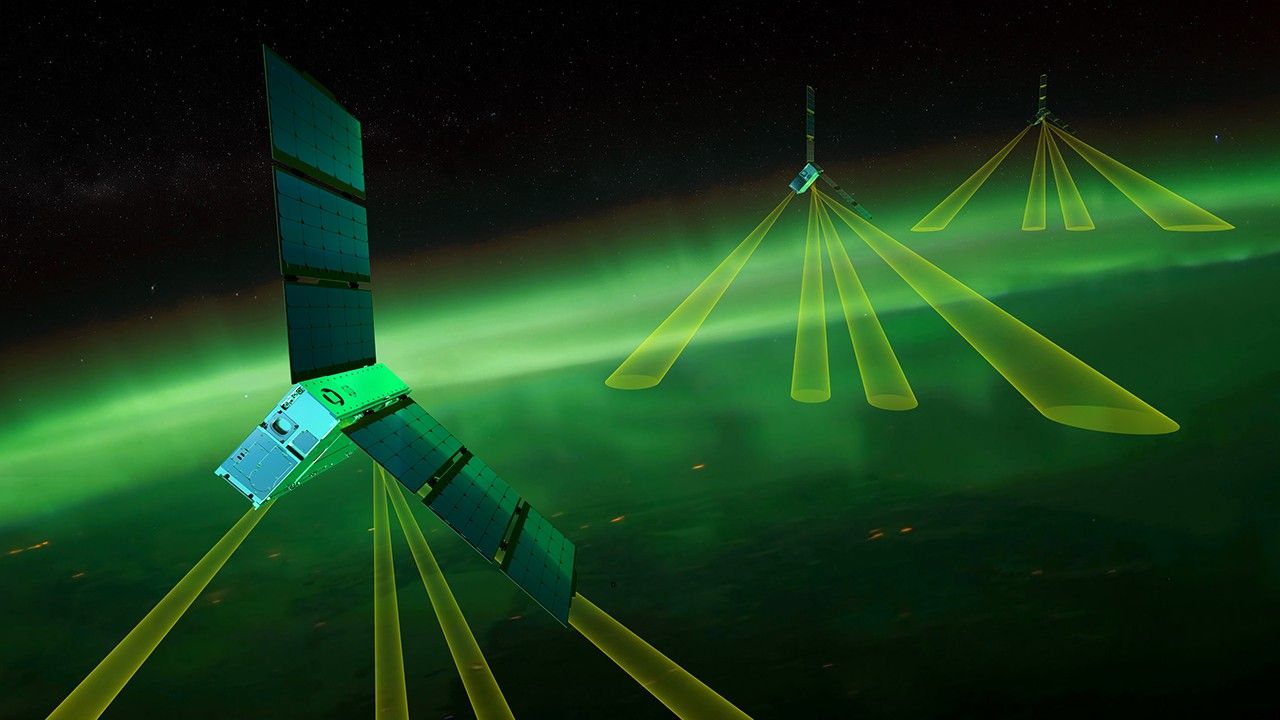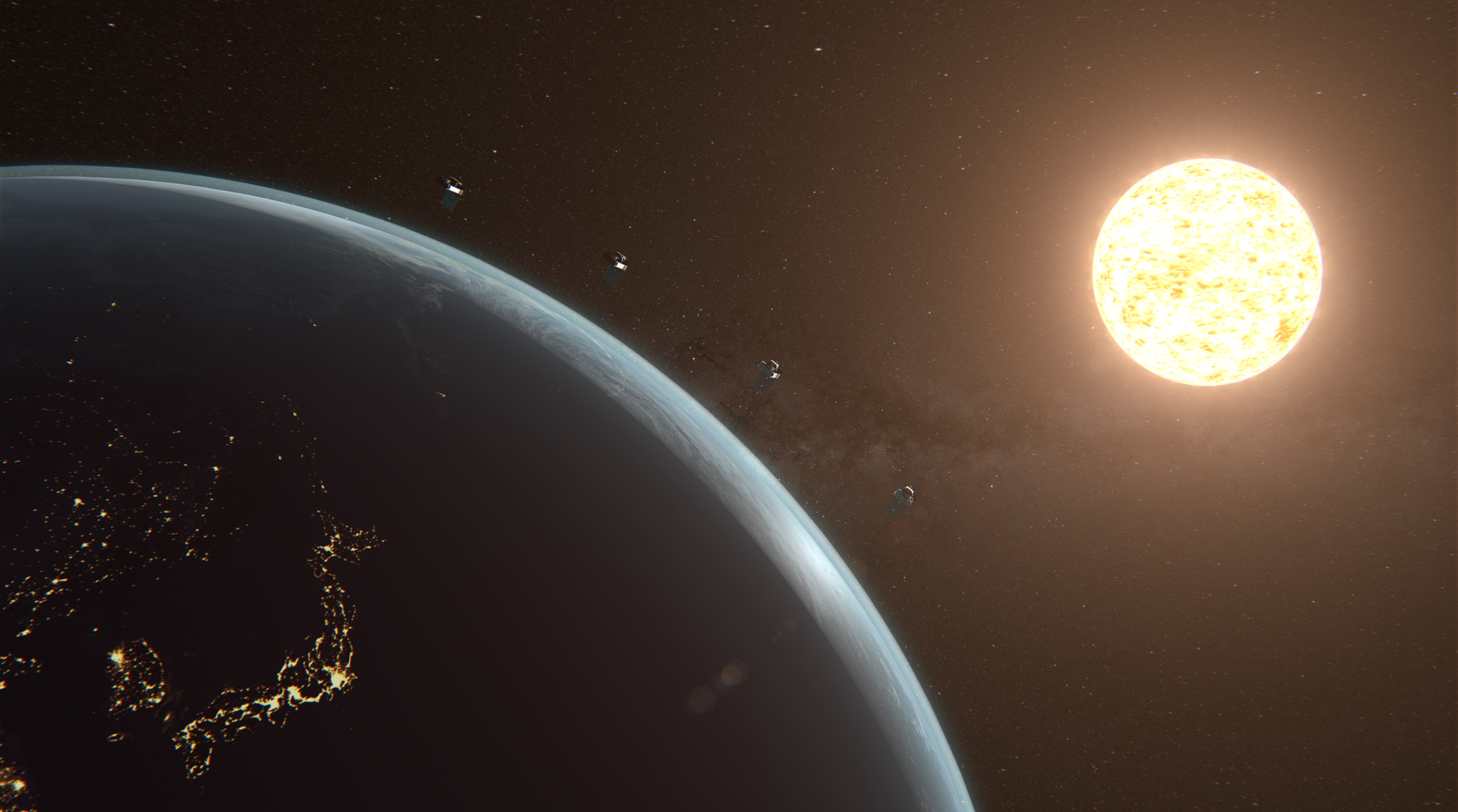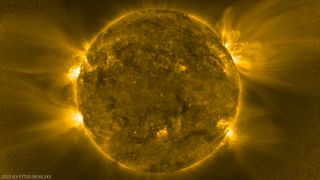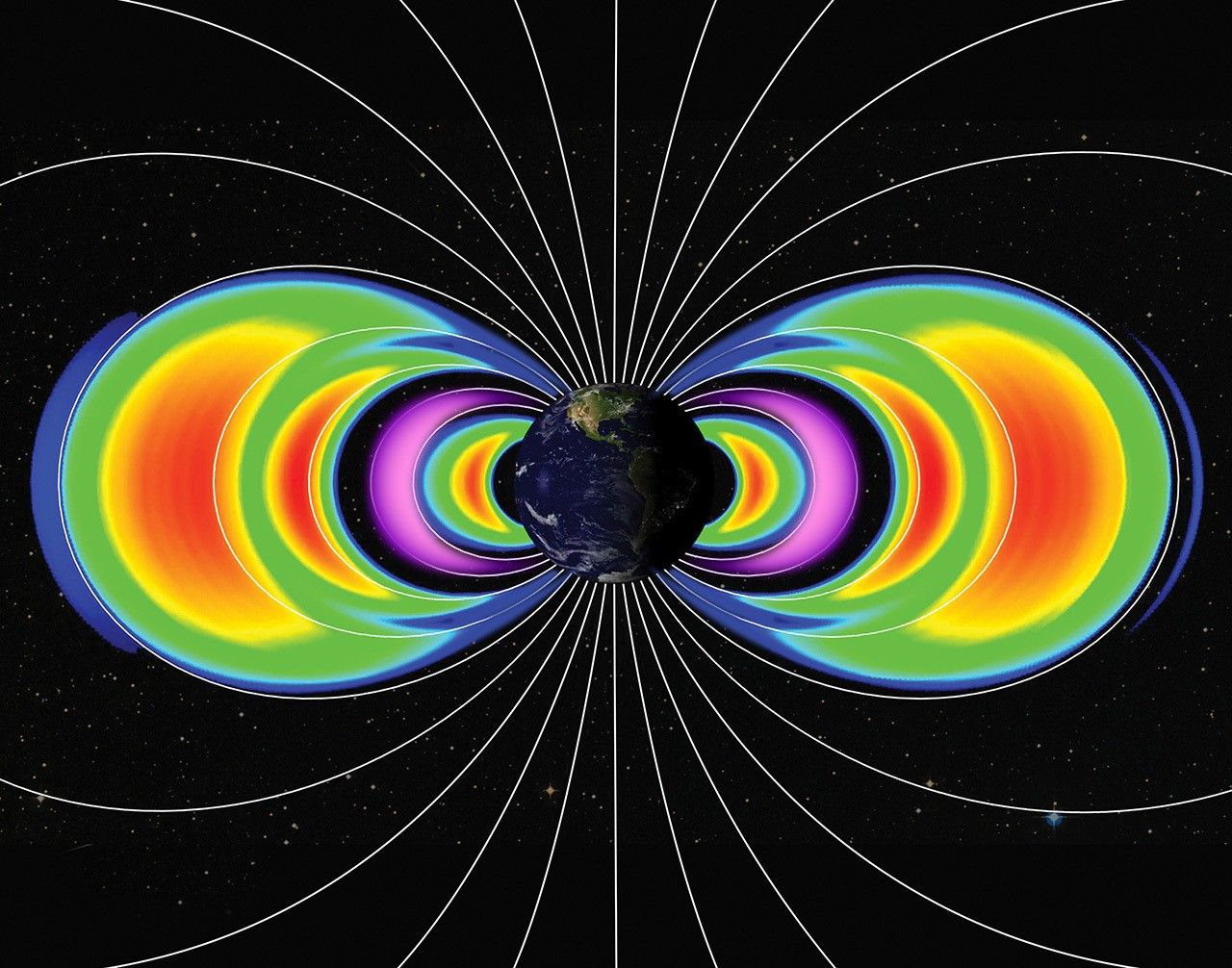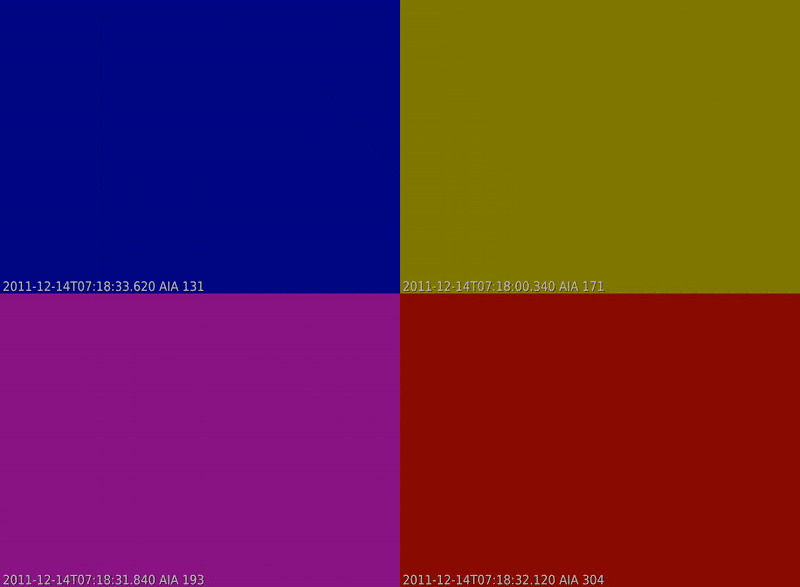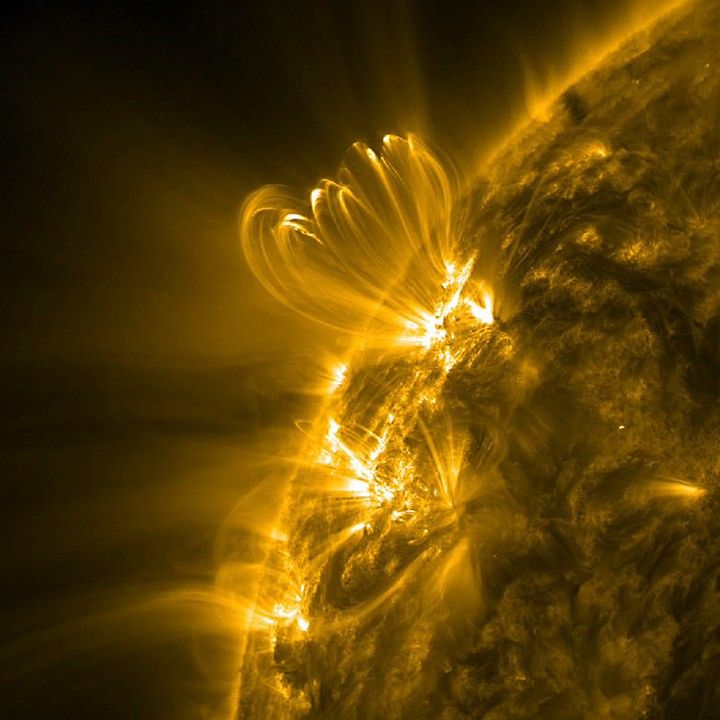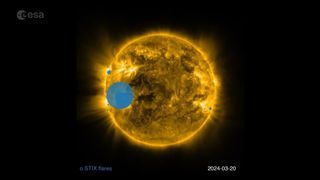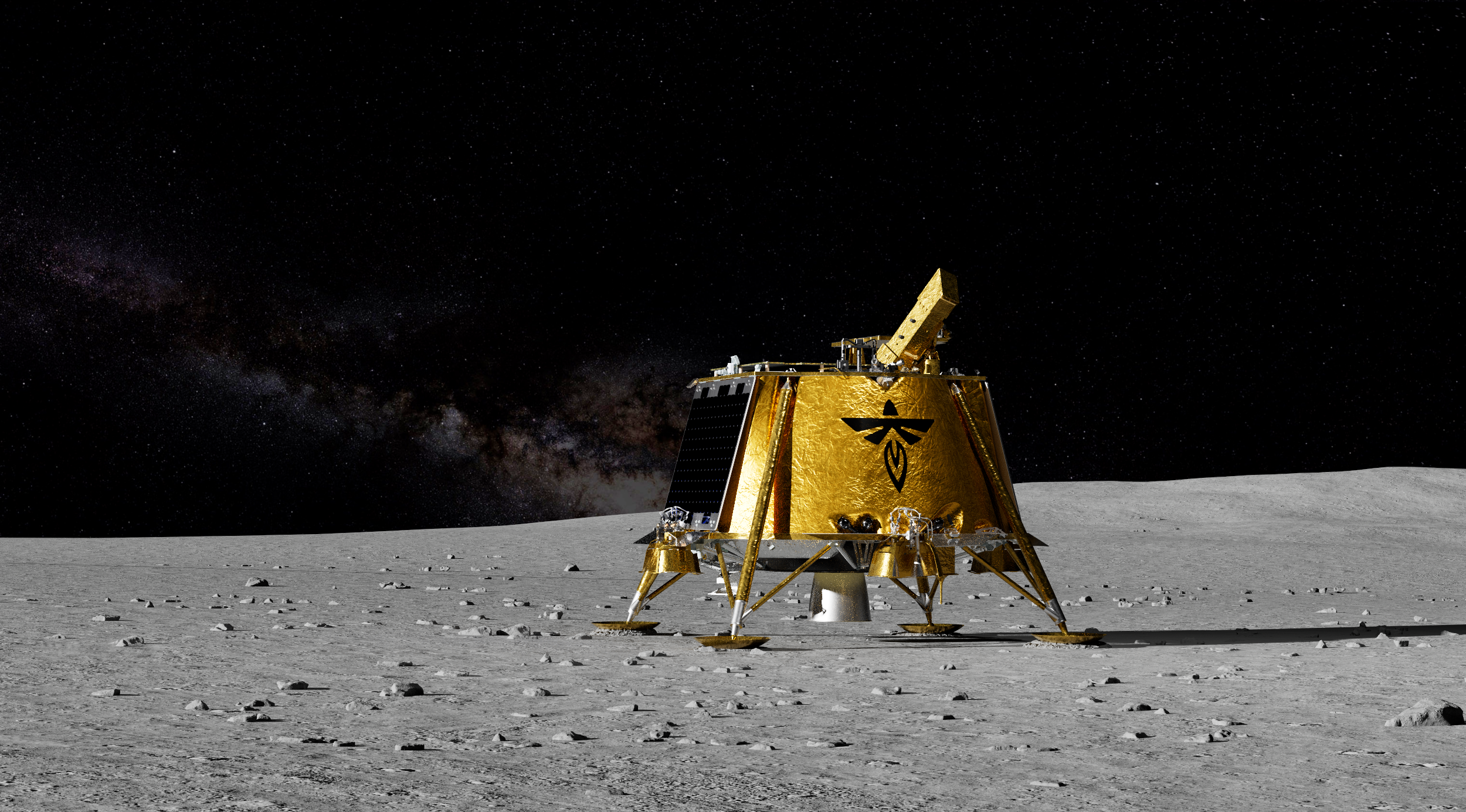6 min read Preparations for Next Moonwalk Simulations Underway (and Underwater) Ahead of launch, NASA’s SPHEREx is enclosed in a payload fairing at Vandenberg Space Force Base on March 2. The observatory is stacked atop the four small satellites that make up the agency’s PUNCH mission. NASA/BAE Systems/Benjamin Fry NASA’s latest space observatory is targeting a March 8 liftoff, and the agency’s PUNCH heliophysics mission is sharing a ride. Here’s what to expect during launch and beyond. In a little over a day, NASA’s SPHEREx space telescope is slated to…
Read MoreTag: The Sun
NASA’s EZIE Launching to Study Magnetic Fingerprints of Earth’s Aurora
5 Min Read NASA’s EZIE Launching to Study Magnetic Fingerprints of Earth’s Aurora High above Earth’s poles, intense electrical currents called electrojets flow through the upper atmosphere when auroras glow in the sky. These auroral electrojets push about a million amps of electrical charge around the poles every second. They can create some of the largest magnetic disturbances on the ground, and rapid changes in the currents can lead to effects such as power outages. In March, NASA plans to launch its EZIE (Electrojet Zeeman Imaging Explorer) mission to learn…
Read MoreNASA’s PUNCH Mission to Revolutionize Our View of Solar Wind
6 Min Read NASA’s PUNCH Mission to Revolutionize Our View of Solar Wind Earth is immersed in material streaming from the Sun. This stream, called the solar wind, is washing over our planet, causing breathtaking auroras, impacting satellites and astronauts in space, and even affecting ground-based infrastructure. NASA’s PUNCH (Polarimeter to Unify the Corona and Heliosphere) mission will be the first to image the Sun’s corona, or outer atmosphere, and solar wind together to better understand the Sun, solar wind, and Earth as a single connected system. Launching no earlier…
Read MoreTiny plasma jets on the sun drive the elusive solar wind, Europe’s Solar Orbiter reveals
Solar scientists have found tiny, short-lived jets of energy on our sun to be the primary drivers of the solar wind, marking a step toward decoding our star’s elusive behavior and, eventually, refining predictions of its storms. The “solar wind” refers to pockets of energetic particles blasted out from the sun. These particles are occasionally directed toward Earth, like last summer when a rare cluster of such storms rained on our planet and sparked breathtaking auroras across the globe — likely the strongest auroras we’ve seen in centuries. The solar…
Read MoreNASA CubeSat Finds New Radiation Belts After May 2024 Solar Storm
5 min read NASA CubeSat Finds New Radiation Belts After May 2024 Solar Storm Key Points The May 2024 solar storm created two new temporary belts of high-energy particles surrounding Earth. Such belts have been seen before, but the new ones were particularly long lasting, especially the new proton belt. The findings are particularly important for spacecraft launching into geostationary orbits, which can be damaged as they traverse the dangerous belts. The largest solar storm in two decades hit Earth in May 2024. For several days, wave after wave of…
Read MoreInvisible ‘flickering’ on the sun could predict potentially dangerous solar flares hours in advance
Shining loops of plasma on the surface of the sun “flicker” hours before they unleash potentially dangerous solar flares, a new study shows. The new findings could help create more reliable space weather forecasts, researchers say. Solar flares are violent outbursts of electromagnetic radiation that shoot from the sun when invisible magnetic field lines at the sun’s surface get twisted up until they eventually snap. These outbursts most commonly occur around sunspots — dark patches where magnetic field lines poke through our home star’s surface — and often pull up…
Read MoreNASA Solar Observatory Sees Coronal Loops Flicker Before Big Flares
3 min read NASA Solar Observatory Sees Coronal Loops Flicker Before Big Flares For decades, scientists have tried in vain to accurately predict solar flares — intense bursts of light on the Sun that can send a flurry of charged particles into the solar system. Now, using NASA’s Solar Dynamics Observatory, one team has identified flickering loops in the solar atmosphere, or corona, that seem to signal when the Sun is about to unleash a large flare. These warning signs could help NASA and other stakeholders protect astronauts as well…
Read MoreScientists turn 3 years’ worth of solar flares into audible sound (video)
If you’re more of an auditory learner than a visual one, this timelapse video is for you. (And, well, visual learners will probably love it, too!) The European Space Agency (ESA) has released an audio-visual representation of solar activity over the last three years, pulling data from its Solar Orbiter probe, which it runs with NASA. In the video, we see blue circles popping up across the surface of the sun — and audible tones paired with each of these circles. As time progresses toward the present day, the frequency…
Read MoreNASA’s LEXI Will Provide X-Ray Vision of Earth’s Magnetosphere
5 min read NASA’s LEXI Will Provide X-Ray Vision of Earth’s Magnetosphere A NASA X-ray imager is heading to the Moon as part of NASA’s Artemis campaign, where it will capture the first global images of the magnetic field that shields Earth from solar radiation. The Lunar Environment Heliospheric X-ray Imager, or LEXI, instrument is one of 10 payloads aboard the next lunar delivery through NASA’s CLPS (Commercial Lunar Payload Services) initiative, set to launch from the agency’s Kennedy Space Center in Florida no earlier than mid-January, with Firefly Aerospace’s Blue Ghost…
Read MoreSun erupts with powerful X1.2 solar flare, causes radio blackouts (photo)
The sun started 2025 with a bang as it fired off a powerful solar flare this morning. The X-class solar flare peaked at an X.12 at 6:40 a.m. EST (1140 GMT) on Friday (Jan. 3), releasing a blast of energy from a sunspot region known as AR 3947 and triggering a radio blackout event for parts of the Southern Atlantic, Africa and parts of eastern South America. When these blackouts happen, they can result in a full or partial loss of high frequency (HF) radio signals in regions that are…
Read More